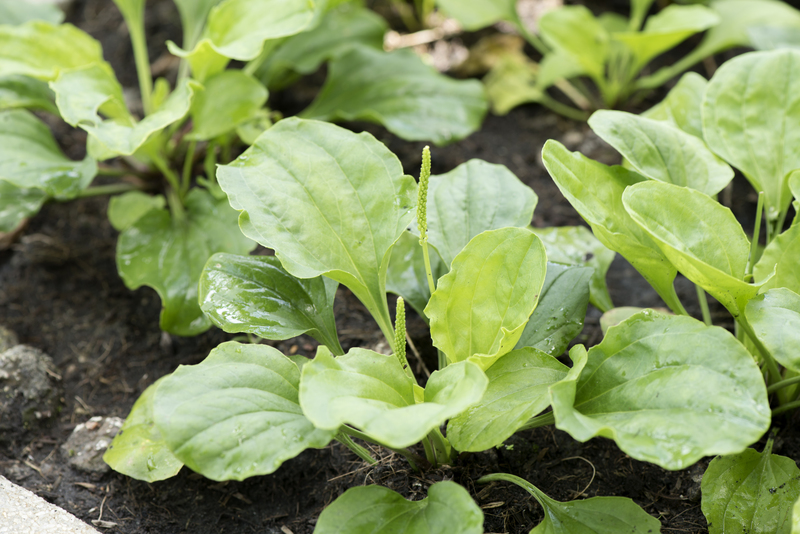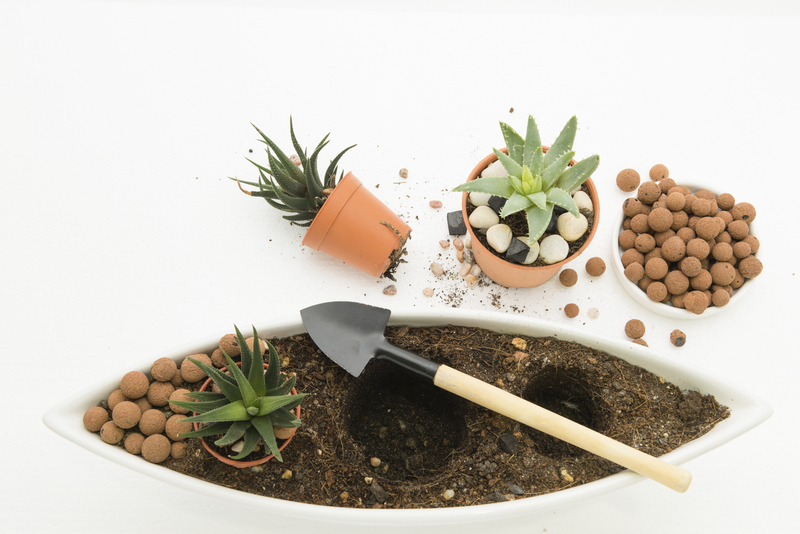Developing an Interactive Garden for Young Minds
Posted on 01/07/2025
Developing an Interactive Garden for Young Minds: A Comprehensive Guide
Children learn best when they are engaged, curious, and allowed to explore the world around them.
One of the most effective and rewarding ways to foster hands-on learning is developing an interactive garden for young minds. This innovative concept transforms a typical garden into a living classroom, promoting cognitive, emotional, and physical growth.

Why Choose an Interactive Garden for Children?
An interactive children's garden stands apart from traditional outdoor play spaces. It combines the wonder of nature with imaginative opportunities, turning simple gardening into a rich educational experience.
- Sparks Curiosity: Children are naturally inquisitive. A sensory-rich environment offers fresh discoveries at every turn.
- Encourages Responsibility: Planting, watering, and nurturing plants nurture a sense of care and stewardship.
- Promotes Active Learning: Through hands-on exploration, young gardeners absorb scientific, artistic, and practical skills.
- Improves Physical Health: Activities like digging, planting, and harvesting foster fine and gross motor development while getting kids outdoors and active.
Key Elements of an Interactive Garden for Young Minds
To maximize the benefits of an interactive garden for young learners, it's essential to blend purposeful design, diverse activities, and child-centric features. Here's how to get started:
1. Planning for Safety and Accessibility
The foundation of any children's interactive garden must be safety and inclusivity. Consider the following:
- Safe Materials: Use non-toxic materials and smooth pathways to prevent injuries.
- Age-Appropriate Sizes: Raised beds, tool storage, and low-maintenance plants ensure all ages and abilities can participate.
- Fencing and Gates: These protect young explorers from venturing off-site or encountering hazards.
2. Designing with Zones and Themes
A well-developed interactive garden for young minds is divided into zones, each catering to different senses or activities:
- Discovery Zone: Hide colorful objects, fossils, or fairy figurines to ignite imagination.
- Sensory Zone: Include plants with unique scents, textures, and colors. Think lamb's ear, mint, sunflowers, and marigolds.
- Edible Zone: Let kids grow cherry tomatoes, snap peas, or strawberries--tasting their harvest connects them to healthy eating.
- Creative Zone: Provide spaces for garden art, painting rocks, or building insect hotels.
3. Choosing the Best Plants for Children's Gardens
- Fast Growers: Radishes, sunflowers, marigolds, and beans show quick results, maintaining enthusiasm.
- Bright Colors: Zinnias, nasturtiums, and cosmos captivate attention.
- Scented Plants: Try lavender, lemon balm, or chocolate mint for a multi-sensory experience.
- Edibles: Berries, peas, baby carrots, and cherry tomatoes allow for delightful taste-testing.
Tip: Always ensure that all plants are non-toxic and safe for children and local wildlife.
Interactive Activities for Young Gardeners
Cultivating a stimulating garden experience for young learners is about more than planting seeds. Encourage exploration and discovery with a rich tapestry of activities:
1. Sensory Exploration
- Touch: Set up a tactile path with different textures (smooth stones, bumpy bark, soft moss).
- Smell: Create aromatic corners with herbs and fragrant flowers.
- Sound: Add wind chimes, water features, or bamboo clackers.
- Sight: Introduce bright wind spinners, butterflies, and seasonal color schemes.
2. Garden Science Projects
- Life Cycle Observations: Watch seeds sprout, grow, flower, and fruit.
- Composting: Build a worm bin and explore decomposition, recycling food waste into soil.
- Pollinator Gardens: Study the bees and butterflies that visit pollinator-friendly blooms.
- Weather Stations: Measure rainfall, temperature, and wind to track the garden's microclimate.
3. Nature Arts and Crafts
- Leaf Printing: Use colorful leaves and petals to make natural artwork.
- Garden Sculpture: Build with twigs, stones, and clay.
- Nature Journals: Encourage sketching, labeling, and storytelling inspired by garden adventures.
4. Themed Garden Challenges
- Grow-Your-Own Salad Challenge: Who can grow the tastiest mix?
- Sunflower Height Contest: Measure stalks and compare results over time.
- Wildlife Counting: Record how many bugs or birds visit each week.
Cognitive, Social, and Emotional Benefits of an Interactive Garden
Cognitive Development
- Problem-solving Skills: Deciding where to plant, interpreting growth patterns, or troubleshooting pests.
- Science Learning: Observing plant biology, weather cycles, and ecological relationships.
- Mathematical Concepts: Measuring plant growth, counting seeds, and estimating harvest times.
Social Growth
- Teamwork and Cooperation: Shared tasks encourage communication and joint problem-solving.
- Community Spirit: Group projects, communal beds, and garden events foster inclusion.
Emotional Wellbeing
- Calm and Focus: Nature's peaceful rhythm helps lower stress and anxiety.
- Sense of Achievement: Watching plants thrive under their care builds self-esteem.
- Connection to Nature: Hands-on gardening nurtures respect and empathy for living things.
Integrating the Interactive Children's Garden at Home or School
Whether you're a parent, teacher, or community leader, creating an interactive garden for education and play can be scaled for any setting:
- Home Gardens: Transform a patch of backyard, balcony, or windowsill with planters and themed kits.
- School Gardens: Collaborate with students and staff to build raised beds, install greenhouses, and hold garden clubs.
- Community Spaces: Convert parks or empty lots into shared children's gardens.
Tips for Long-term Success
- Engage Young Gardeners Regularly: Frequent visits, daily chores, and weekly activities keep enthusiasm high.
- Rotate Crops and Themes: Seasonal planting, holiday events, and new projects sustain interest throughout the year.
- Celebrate Progress: Hold garden parties, produce tastings, or art exhibitions with family and friends.
Overcoming Challenges in Developing an Interactive Children's Garden
While incredibly rewarding, creating a dynamic garden for young minds involves some common hurdles. Here's how to address them:
- Limited Space: Try vertical gardening, container plants, or trellis systems to maximize small areas.
- Time Constraints: Choose low-maintenance varieties and assign simple weekly tasks that fit busy schedules.
- Budget Friendly Ideas: Upcycle materials (old buckets, yogurt cups), request seed donations, or start from kitchen scraps.
- Pest Control: Use natural deterrents, encourage beneficial insects, and teach children about organic gardening.
Technology and the Modern Interactive Garden
Today's interactive educational gardens can incorporate technology for even more engaging experiences:
- Garden Apps: Track growth, identify plants, and log observations with user-friendly apps designed for children.
- QR Codes: Label plants with codes that unlock informational videos or fun facts when scanned.
- Time-Lapse Cameras: Set up cameras to watch plants grow, blossom, and attract wildlife over days or weeks.
- Virtual Field Trips: Connect your garden to others worldwide via video chat.

Resources for Continuing the Garden Journey
Inspiration for enhancing your interactive garden for young learners is everywhere:
- Children's Gardening Books: Check local libraries for beautifully illustrated guides.
- Online Forums: Join gardening communities for activity ideas, troubleshooting, and shared success stories.
- Workshops and Classes: Many local nurseries and botanical gardens offer family sessions or kids' clubs.
*Encouraging ongoing discovery and engagement turns a one-time project into a lifelong love of nature.*
Conclusion: Growing More Than Just Plants
Developing an interactive garden for young minds is about more than planting seeds. It's about nurturing curiosity, confidence, creativity, and strong connections to the natural world. With thoughtful design, engaging activities, and community support, an interactive children's garden becomes a vibrant hub of learning, belonging, and fun.
Ready to help the next generation grow? Start your interactive garden today, and watch young minds--just like the plants--reach for the sun!

